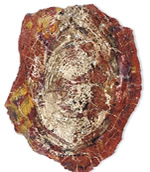Our National Symbols
| National Flag | |
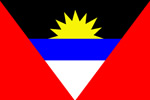 |
Designed by Mr. Reginald Samuel in a 1966. The seven point Golden Sun symbolises the dawn of a new era. Red: symbolises lifeblood of slave forefathers and dynamism of the people. Blue: symbolises hope. Black: symbolises the soil and African heritage. Gold, Blue and White: Antigua and Barbuda's tourist attraction - sun, sea and sand. "V": Victory at last!
The flag was adopted on February 27, 1967. |
Coat of Arms & Motto |
|
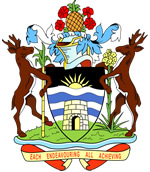 Originally Designed by: Mr. Gordon Christopher Modified by: Mr. Don Cribbs |
|
National Dress |
|
 Designed by Heather Doram |
Worn by market vendors and cake makers in Antigua and Barbuda, circa 1834. (This version designed by native Antiguan Heather Doram.) "National Day" is when many Antiguans proudly wear their national clothing, serve or eat local food and drinks, and attend national prayer services. (Photo by Timothy Payne). |
National Flower |
|
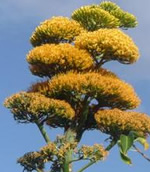 |
The Dagger Log's (Agave karatto Miller) yellow flowers rises from the large rosette formed by the Agave plant. Years ago, fishing rafts were made from the flower's log (or stem) and fishing bait was made from the white interior pulp of the leaves. |
National Animal |
|
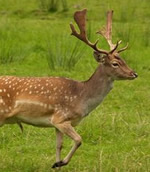 |
Thought to be brought to our nation by the Codringtons in the early 1700s, the European Fallow (Dama dama dama) deer live and breed happily on Barbuda and Guiana island. They do not live on any other Eastern Caribbean island. There are two varieties, black and common. |
National Fruit |
|
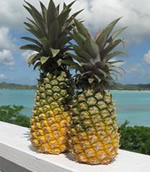 |
Originally introduced by the Arawakan speaking people, the Antiguan Black Pineapple (Ananas comosus) was used for making twine, cloth and for healing purposes. Today it is mainly grown on the south side of Antigua. |
National Tree |
|
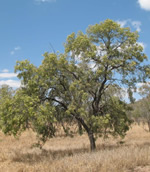 |
The Whitewood (Bucida buceras/font L), a wide-spreading ornamental shade tree with nearly horizontal branches, is part of the Combretun family and related to the mangroves and almond trees. Its timber is heavy and hard and was once used for making gun carriages. Because of its "black heart," the tree was once known as "Black Gregory." |
National Bird |
|
 |
The Frigate (Fregata magnificens L) is also known as Man-o'-War or Weather bird. Relatives of the pelicans, the male is glossy black. To attract females, he blows up his scarlet throat. The females have white breasts. Frigates weigh about three pounds, have a wing span of eight (8) feet, a deeply forked tail and fly about 22 miles per hour (mph). |
National Sea Creature |
|
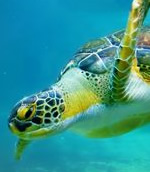 |
As distinguished by its narrow pointed beak and often jagged edge on both sides of the shell, the Hawksbill turtle (Eretmochelys imbricata) was originally perceived as a gift from Caribs, Arawaks and archaic gods. Once actively hunted for its highly valued "tortoise shell," the Hawksbill is now on the endangered list. |
National Stone |
|
|
|
Wood becomes petrified (fossilised) when buried for extended periods of time in mud containing volcanic ash. Antigua's petrified wood, belongs to the Oligocene period of geological time. Petrified wood fragments may still be found scattered throughout central Antigua |
